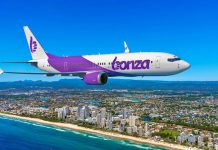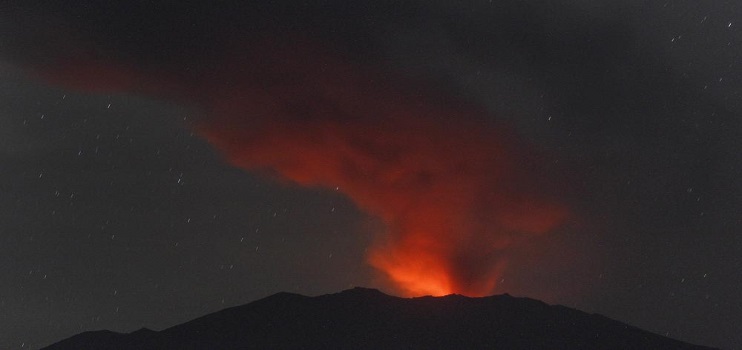The ongoing eruption of Mount Ruang to the north-west of Bali has brought into sharp focus the importance of travel insurance and the problem airlines –particularly low cost – have in dealing with such events.
According to Natalie Ball, Director of www.Comparetravelinsurance.com.au the insurance industry is expecting up to 20,000 claims from the ash cloud disruptions and the total bill put earlier at $20 million could now – after a reassessment – top $80 million.
And that is just the insurance cost and does not include the burden to airlines or holiday makers who were not insured.
There is considerable confusion about the level of cover and the cut-off date for liability.
For instance if you purchased your travel insurance before July 2nd, consider yourself lucky says Ms Ball. “Most travel insurers will not accept claims related to the Bali ash cloud from customers who bought their policy after July 2, and in some cases, July 3”
And it’s important to note that the type of cover you buy makes all the difference.
“Unlike basic policies, comprehensive policies do provide cancellation cover for unforeseen circumstances. A basic travel insurance policy does not generally provide cover for travel delays or cancellation. They are often medical only policies and are priced accordingly. However, many standard or comprehensive policies do provide cancellation cover and additional travel expenses incurred as a result of natural disasters.”
Ms Ball said that “depending upon your chosen insurer, most travellers can expect all reasonable out-of-pocket expenses to be reimbursed. The major insurers have set-up dedicated teams to work on the event claim phone lines in order to separate these calls from the ‘business as usual’ calls so that customer calls are responded to as quickly as possible.”
It is also important to contact your insurer before committing to additional costs and then keep those expenses to a minimum and hang on to your receipts says Ms Ball.
Airlines have come in for criticism for the handling of the situation but they have been working with a series of major challenges. Firstly airlines – particularly low cost – are not staffed for emergencies like this and if they were the fares would be far higher. Compounding that issue is the nature of the volcanic eruption and the fickle winds.
Unlike most volcanic eruptions Mount Ruang continues to erupt – instead of the typical profile of just one major eruption. The wind direction also changed often blowing the cloud back over Bali and its airport with little notice to airline operations departments.
This led to airlines telling passengers to go to the airport and then cancelling the flight at the last minute sending stress levels to the edge.
Both Jetstar and Virgin Australia however moved extra staff to Bali to help and also rostered additional staff to handle the phone traffic.
Some passengers were also critical of Australia’s airlines for not flying when all others were in the air but Jetstar and Virgin Australia make no apology for that conservative stand.
The airline’s position was backed up by Australia’s safety watchdog the Civil Aviation safety Authority which reissued and Airworthiness Bulletin on Monday July 13th which warned airlines to stay well clear of the ash cloud.
The CASA AB said: “Flying through an ash cloud must be avoided by all means due to the extreme hazard it presents. Volcanic ash can cause extreme abrasion to all forward facing parts of the aircraft, to the extent that visibility through the windshields may be totally impaired, aerofoil and control surface leading edges severely damaged, airspeed indications become unreliable through blocking of the Pitot heads/static ports, and engines may even shut-down rapidly or lose power gradually, often only being detected when catastrophic performance loss has occurred.”
And it added; “In addition to volcanic ash, volcanic eruption columns also contain many gases including water vapour, sulphur dioxide, chlorine, hydrogen sulphide and oxides of nitrogen. Following the eruption, oxidation and hydration, the sulphur dioxide forms sulphuric acid droplets. The resulting ash/acid mix is highly corrosive and can cause further damage to jet engines and pitting of windscreens.”
Last year a Jetstar flight from Perth to Jakarta flew through volcanic ash at night that was not forecast and the airline was left with a $20 million damages bill.
The most famous encounter with volcanic ash was in 1982 when British Airways flight BA9 on route from Kuala Lumpur to Perth encountered an ash cloud from the sudden eruption of Mt Galunggung, 110km south of Jakarta.
The Boeing’s 747’s four engines quit promoting the now famous address from captain Eric Moody; “Ladies and gentlemen, this is your captain speaking. We have a small problem. All four engines have stopped. We are doing our damnedest to get them under control. I trust you are not in too much distress.”
The 260 passengers and cabin crew aboard then endured a 15 minute terrifying ride as the pilots and flight engineer battled to get the plane’s engines back to life. The 747 descended from 37,000ft to 14,000 feet before the engines came back to life. According to Captain Moody they had 10 minutes left before ditching.
























